reminder | Healthfund Rebates Expire in
BOOK TODAY TO MAKE THE MOST OF YOUR BENEFITS
Orthotics Sydney
Find Out What They Are
And How They Work
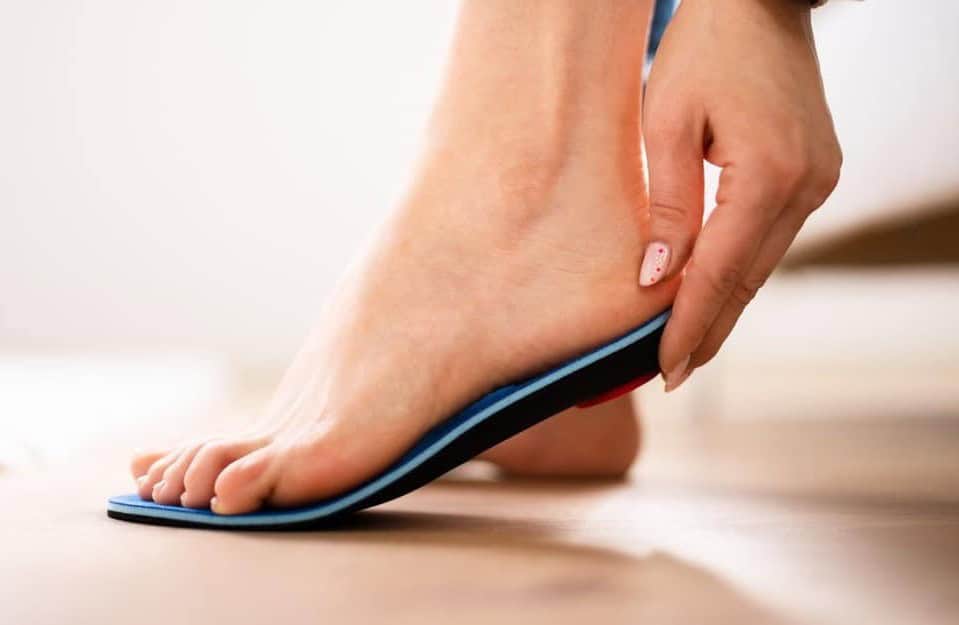
Many people experience foot pain and discomfort at some point in their lives. Whether you have flat feet, high arches, or specific conditions like plantar fasciitis, orthotics can provide relief and improve your overall foot health. If you’re looking for solutions in Sydney, custom orthotics may be the answer. At ModPod Podiatry, we specialise in creating orthotics that support your unique foot structure, helping you move with ease and comfort.
This post explores how orthotics work, who can benefit from them, and why choosing custom orthotics in Sydney can transform the way you walk, run, and live.
What Are Orthotics
These are devices used to support, align, or correct the function of your feet, ankles, and legs. Custom-made or prefabricated orthotics can be used to treat a variety of foot and ankle conditions. These include flat feet, high arches, and plantar fasciitis.
Custom orthotics are specially designed for each individual. They are created from a precise mold of your foot. This ensures that the insoles fits your unique foot shape and needs.
Foot orthotics can be made from different materials including foam, plastic, or carbon fiber. They can be used to treat or prevent foot and ankle issues.
Prefabricated footbeds, on the other hand, are pre-made and come in a variety of sizes and shapes. They are less expensive than custom insoles but may not provide the same level of support and comfort.
Orthotics are a treatment option for many conditions. These include pain in the foot, ankle, knee, hip, and lower back. They can also be used to improve athletic performance and prevent injuries.
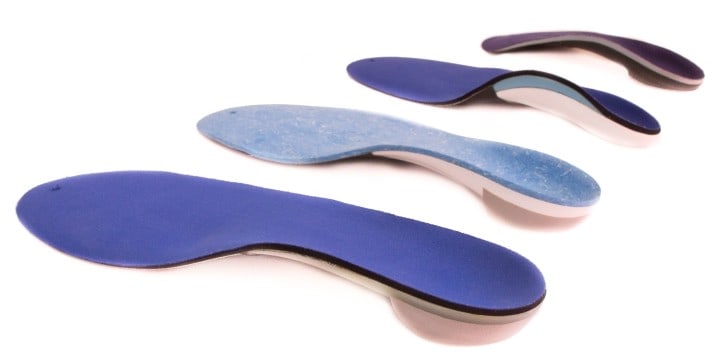
These devices are specifically designed to fit an individual’s feet and provide support, correction, and relief for a variety of foot and ankle problems. They are made from a mold of the foot that is taken by a podiatrist.
The process of making custom orthotics typically involves the following steps:
Evaluation: A podiatrist will evaluate the individual’s feet, gait, and medical history to determine the best type of shoe insert for their needs.
Casting or scanning: A mold of the feet is taken using either plaster casting or digital scanning. This mold captures the unique shape and contours of the feet.
Design and fabrication: The mold is used to create a design, which is then fabricated using materials such as foam, plastic, or carbon fiber. The insole is shaped and trimmed to fit the individual’s feet.
Fitting: The insert is fitted into the individual’s shoes to ensure proper fit and comfort.
Custom orthotics are typically more expensive than prefabricated insoles, but they offer a higher level of customisation and precision. They can provide long-lasting relief and correction for foot and ankle problems, and are often covered by health insurance plans with a podiatrist prescription.
Prefabricated insoles, also known as off-the-shelf orthotics, are pre-made foot supports that are designed to provide a generic level of support and correction to the feet. They are typically made from a variety of materials, such as foam, gel, or plastic, and are available in a range of sizes and shapes.
Prefabricated insoles are generally less expensive than custom orthotics and can be purchased without a prescription. They are available over-the-counter at pharmacies and online retailers.
They are designed to provide relief for a variety of common foot and ankle conditions, such as plantar fasciitis, flat feet, and arch pain. They can also be used for general foot and arch support, as well as to prevent foot and ankle injuries during athletic activities.
While prefabricated insole are not as customised as custom orthotics, they are still effective for many individuals who require a basic level of foot support or correction. However, individuals with more severe or complex foot and ankle problems may benefit more from custom orthotics.
It is important to choose the correct size and type of prefabricated insole for your needs, and to consult with a podiatrist if you have questions or concerns about using your footbeds.
At ModPod we have been prescribing Orthotics for over 20 years.

Conveniently
Located Clinic
5 Convenient Clinics Across Sydney & 2 Central Coast Clinics

EXPERIENCE
Treated Over 30,000 Patients

Expert Care
We Have A Wealth Of Knowledge With All Types Of Insoles

New Patient
Offer
New Patient Offer – $15 OFF First Visit
How Do Orthotics Work?
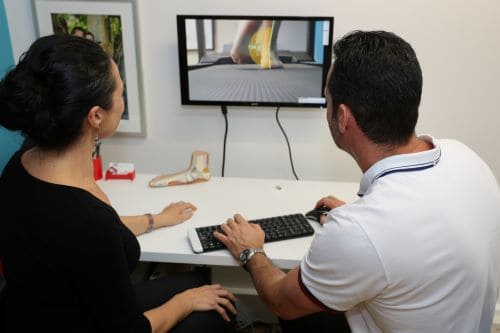
Orthotics work by modifying the forces between your foot and the ground. An orthotic is designed to enhance the motion of your foot. Depending on the type of orthotic and the individual’s specific needs, orthotics can help to:
- Improve alignment: Orthotics can help to correct abnormal foot and ankle alignment, which can reduce stress on the feet, ankles, knees, and hips.
- Reduce pain: Orthotics can help to redistribute pressure on the feet and reduce pain caused by conditions such as plantar fasciitis, flat feet, and heel spurs.
- Improve function: Orthotics can improve the function of the feet and ankles, allowing individuals to walk, run, and perform daily activities with greater ease and comfort.
- Prevent injuries: Orthotics can help to prevent foot and ankle injuries by providing support and stability to the feet during athletic activities or other high-impact movements.
The specific way that orthotics work depends on the type of orthotic and the individual’s needs. Custom orthotics are designed to provide a precise level of support and correction for the individual’s specific foot and ankle needs. Prefabricated orthotics provide a more generic level of support and correction, but can still be effective for many individuals who require basic foot support or correction.
Orthotics are typically worn inside the individual’s shoes and should be fitted properly to ensure maximum effectiveness. It is important to follow the recommendations of a podiatrist when using orthotics, as improper use or fit can lead to discomfort or further injury.
Our biomechanical assessment is a process of analysing the movement and function of the foot/leg and body, with a focus on the mechanical forces that are involved in those movements. The assessment may include a variety of tests and measurements to evaluate the range of motion, strength, and stability of different parts of the body. The assessment may also be used to identify biomechanical issues that may contribute to poor posture, gait abnormalities, and other movement-related problems. Based on the results of the assessment, a treatment plan may be developed that includes exercises, orthotics or other interventions to improve function and reduce pain.

Successful Treatments

Get Back To Activity Sooner

Evidence Based Approach

Walk Pain Free Again

You Are In Safe Hands
Benefits of Custom Orthotics
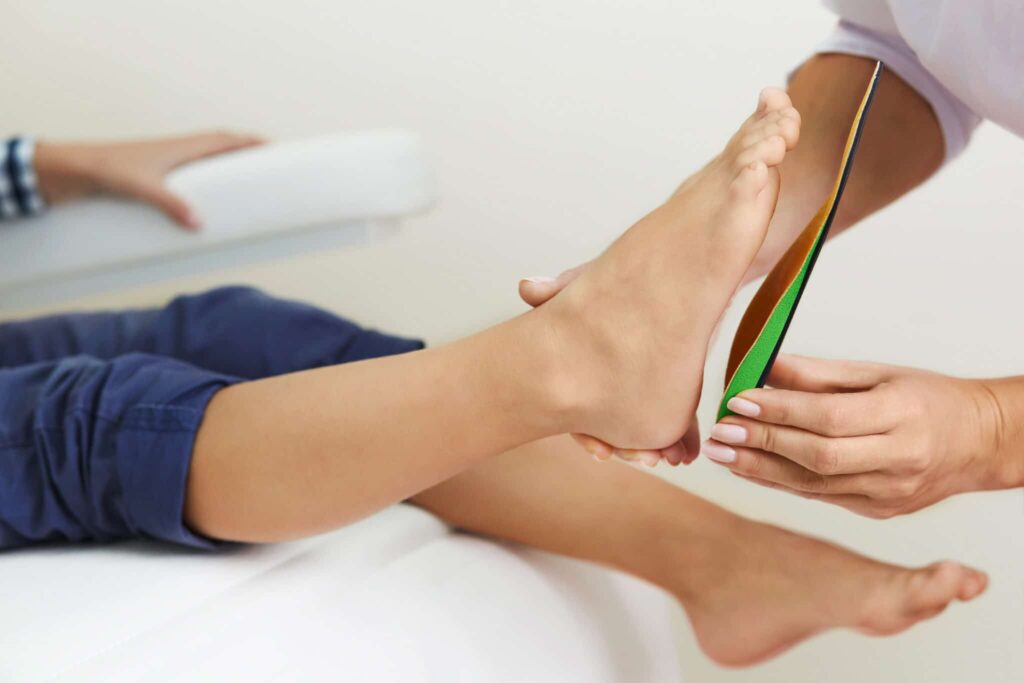
Custom orthotics offer a range of benefits that go beyond pain relief. When you wear orthotics tailored to your feet, you’ll experience improved support, posture, and mobility.
1. Improved Foot Support
Orthotics provide superior support for your feet, ensuring that your arches, heels, and toes sit in the correct position. This support can prevent overpronation (excessive inward rolling of the foot) and supination (outward rolling), both of which can cause pain and long-term damage.
Wearing custom orthotics prevents excessive strain on your foot muscles, tendons, and ligaments, reducing the risk of injuries and helping you stay active.
2. Relief from Pain
If you suffer from conditions like plantar fasciitis, Achilles tendinitis, or general foot pain, orthotics can relieve pressure and reduce inflammation. By redistributing pressure and supporting your feet, custom orthotics reduce pain and allow for faster recovery.
Many patients with chronic pain conditions notice significant improvements after wearing orthotics. Pain in your knees, hips, or lower back may also improve as your body aligns correctly.
3. Enhanced Athletic Performance
Athletes often benefit from custom orthotics because they enhance performance and reduce injury risk. When your feet function properly, you can run, jump, and move more efficiently. Orthotics also help reduce the impact on your joints, making them a great tool for preventing sports injuries.
By improving foot stability and control, orthotics allow athletes to perform better while staying pain-free.
4. Better Posture and Alignment
Your feet form the foundation of your body’s alignment. If your feet don’t sit correctly, your posture can suffer, leading to issues with your knees, hips, and spine. Orthotics correct the alignment of your feet, promoting better posture and improving your overall balance.
When you walk or stand with correct posture, you place less strain on your muscles and joints, which can prevent pain and fatigue.
Why Choose Orthotics in Sydney
Sydney offers a wide range of options for orthotic treatments, but custom orthotics from ModPod Podiatry stand out for their quality and effectiveness. Our team of experienced podiatrists takes a personalised approach to foot care, ensuring that your orthotics meet your specific needs.
We use the latest technology to scan your feet and create precise orthotics that fit perfectly. We also offer ongoing support and adjustments to ensure that your orthotics continue to provide the relief and support you need.
By choosing ModPod, you’ll experience superior comfort, improved mobility, and relief from pain. Unlike store-bought insoles, custom orthotics address the root cause of your discomfort, helping you achieve long-term results.
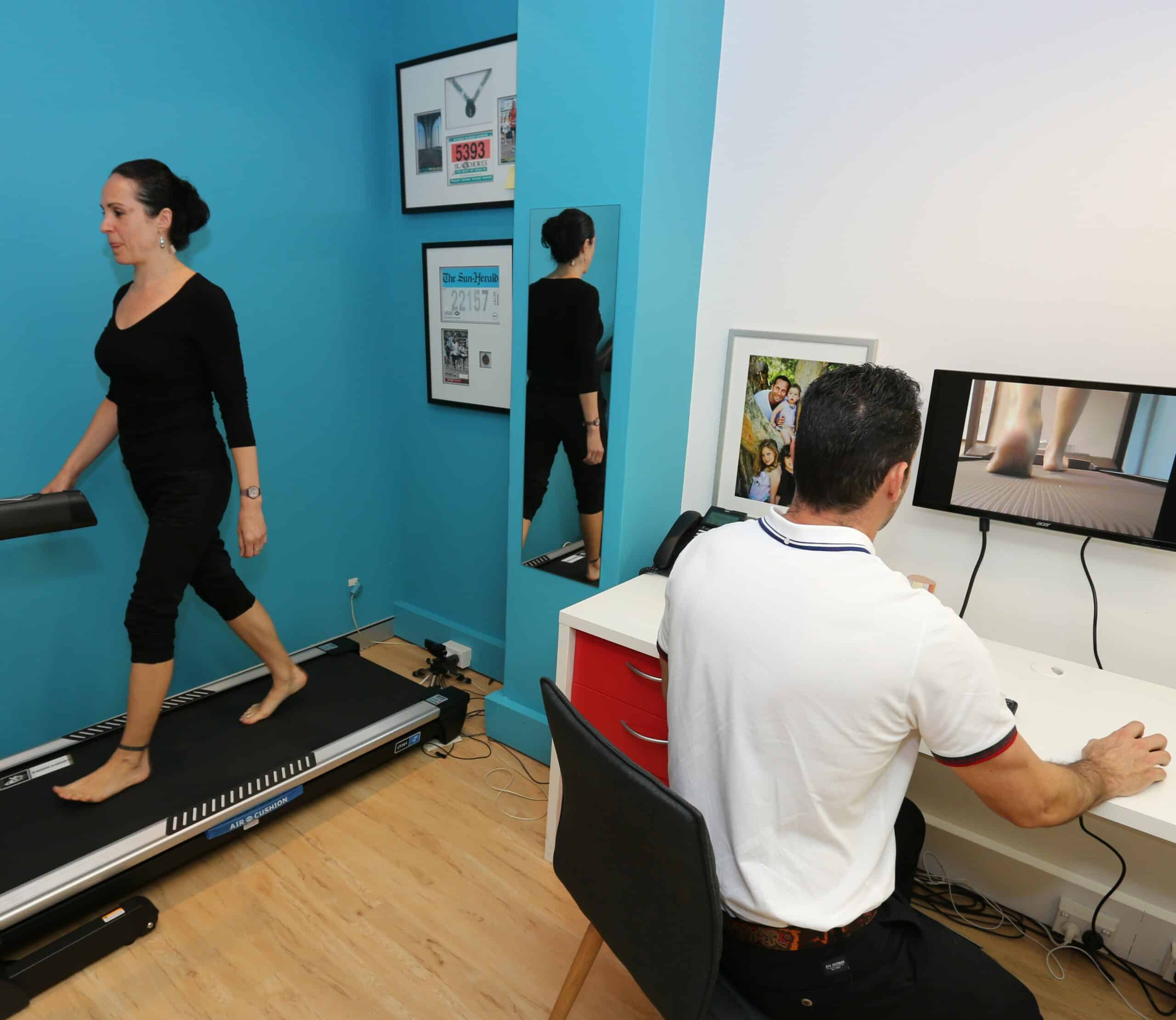
Frequently
Asked Questions
Not everyone needs to be wearing orthotics. However if bad and abnormal forces are beyond your bodies’ current capacity to tolerate them then an orthotic may be of benefit. Tissue has a particular capacity to tolerate stress, a certain amount of stress is essential for positive adaptation however if placed beyond this level for an extended period of time or if done repeatedly some parts may begin to let you down.
If you are not sure about the need for an orthotic, give us a call and one of our Sydney orthotics experts can talk through this process with you.
No! Not if the orthotics are designed and used correctly. Current evidence has shown quite the opposite, that if you wear orthotics there is an increase in foot muscle activity.
Orthotics are not a life sentence!. The exact reason why you need an orthotic in the first place and the severity of your initial injury will dictate how long you will need to wear the orthotics for.
Wherever possible there will be a plan in place to remove the orthotic and allow your improved foot function to continue.
If you’re looking for the best Sydney orthotics on offer look no further than ModPod.
Orthotics can be worn with many types of shoes, but some shoes may be better suited to orthotics than others. It is important to choose shoes that provide enough space and support to accommodate the orthotics.
Many insurance plans will cover the cost of orthotics, but coverage varies by plan. It is important to check with your insurance provider to determine if orthotics are covered and what the out-of-pocket costs may be.
Orthotics may need to be replaced if they become worn, damaged, or no longer provide adequate support or alignment. It is important to have orthotics checked every 12 months by a podiatrist to ensure they are still providing the intended benefits.
Chronic pain: The persistent pain associated with Morton’s neuroma can make it difficult to walk, stand, or engage in physical activity, which can negatively impact your quality of life.
Foot deformities: Over time, Morton’s neuroma can cause the affected toes to become permanently contracted or misaligned, which can lead to other foot deformities.
Nerve damage: In some cases, Morton’s neuroma can cause permanent nerve damage, which can lead to numbness or tingling in the affected area.
Reduced mobility: If your Morton’s neuroma symptoms are severe enough, you may have difficulty walking or standing for extended periods of time, which can limit your mobility and independence.
It is important to seek treatment for Morton’s neuroma to prevent these potential complications from occurring.







